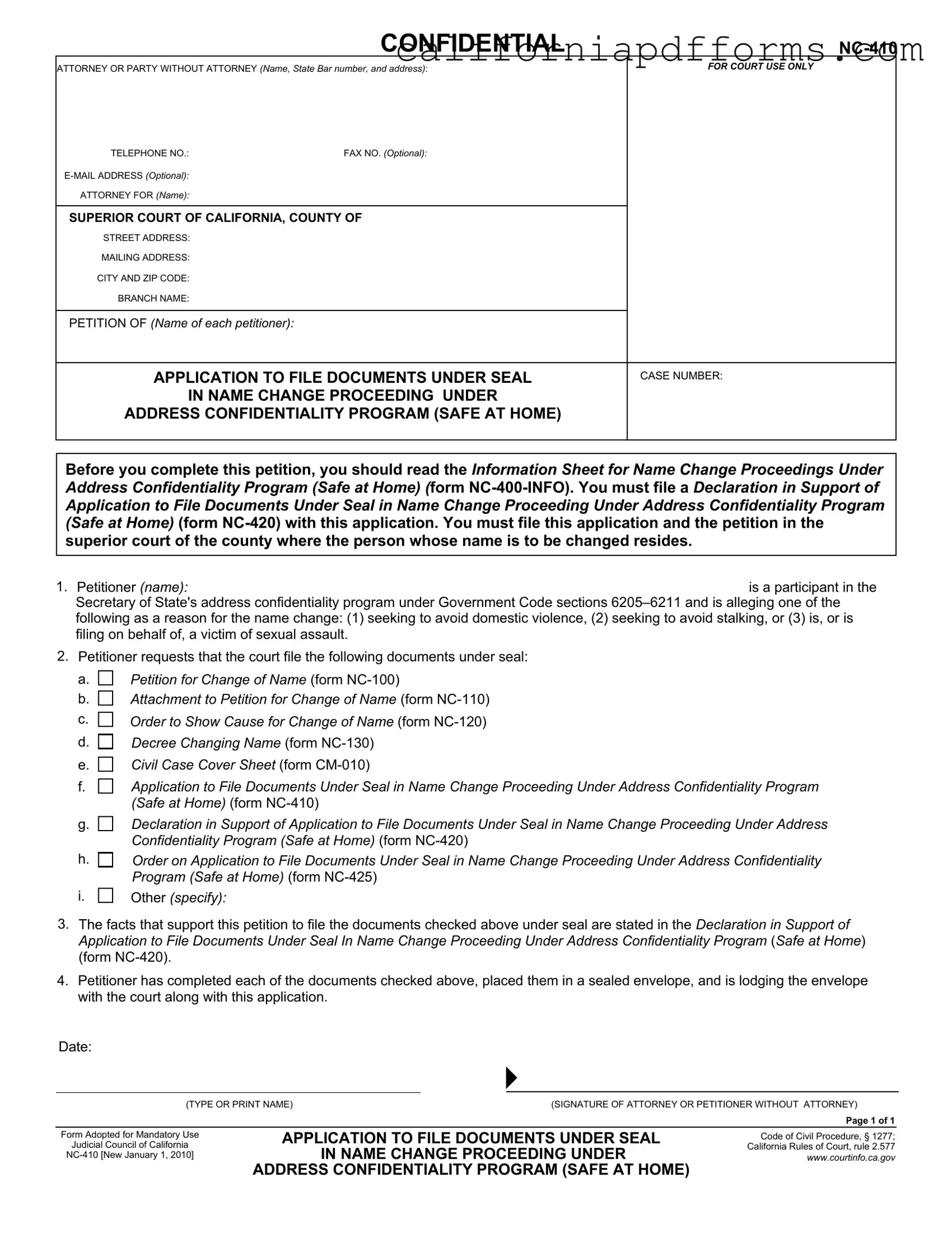Download California Nc 410 Form
The California NC-410 form is an application used in name change proceedings under the Address Confidentiality Program, commonly known as Safe at Home. This form allows individuals seeking to change their name to file certain documents under seal, ensuring their personal information remains confidential. If you need to fill out this form, click the button below to get started.
Open Your Form Online
